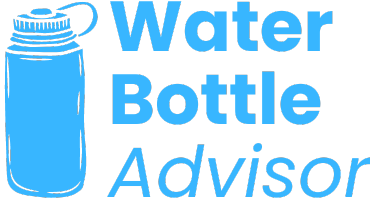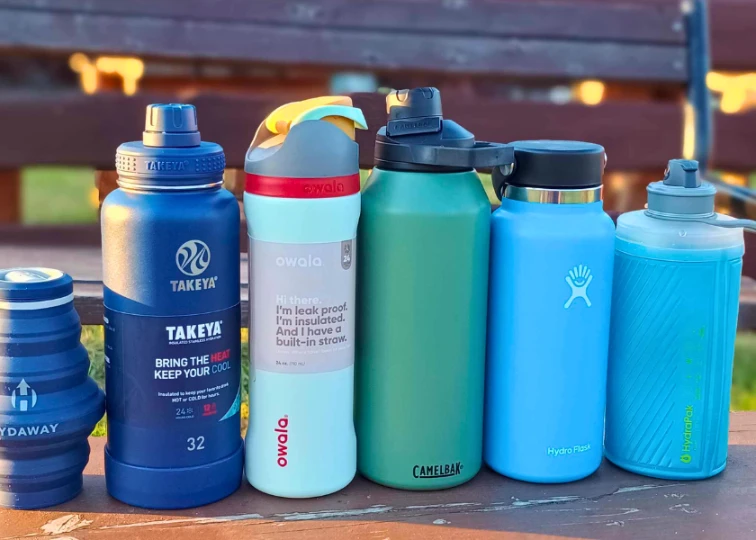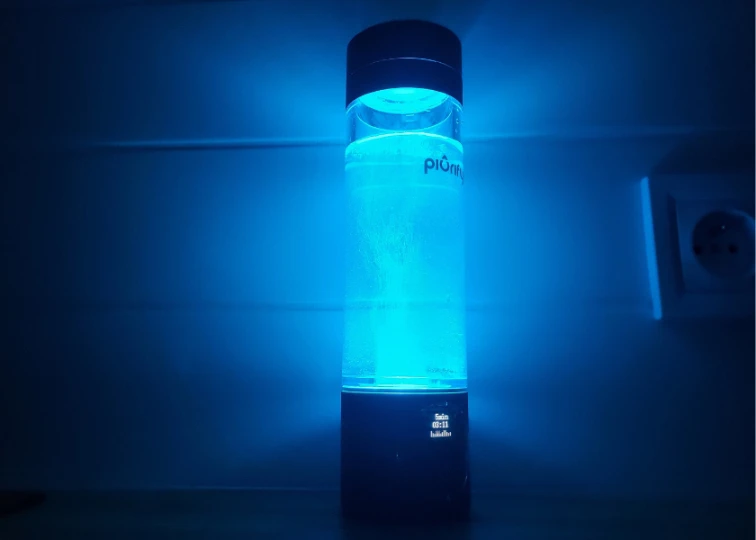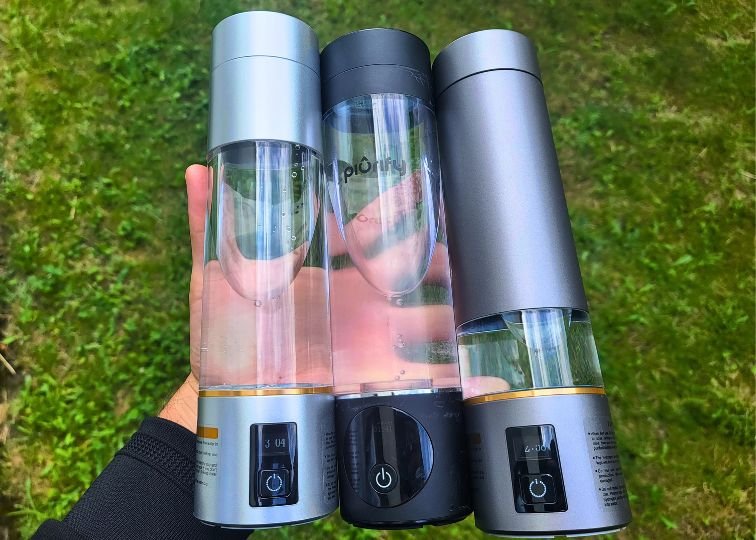The fact you landed on this article shows you’re aware of the potential risks that come with using questionable water bottles and that you’re ready to choose a healthier, safer option.
I was shocked when I read a recent study that looked at plastic water bottles across Europe. Over half of them were found to be releasing DiBP, an endocrine-disrupting chemical.
Now, even though I’ve got my own collection of plastic reusable bottles that I trust completely, it goes without saying that glass and stainless steel are the best choices when it comes to keeping your water pure and toxin-free.
In this article, I’ll walk you through the safest, non-toxic, BPA- and lead-free water bottles that my family and I use every day.
And just to be clear – all the bottles in this ranking are equally safe to use. They meet the standards you’d expect from high-quality, reusable drinkware. But safety was just one part of the equation. I also looked at durability, how leakproof they are, how the lids work in real life, and a bunch of other small but important details. This ranking is based on the full package – not just what’s in the bottle, but how well the bottle fits into daily life.
Some of the links on this page are affiliate links. This means that if you click on one of the links and make a purchase, I may earn a small commission at no additional cost to you.
What Are the Safest Water Bottles to Drink From?
Coldest | Hydro Flask | Artisan’s Anvil | Owala FreeSip | Ello Syndicate | |
|---|---|---|---|---|---|
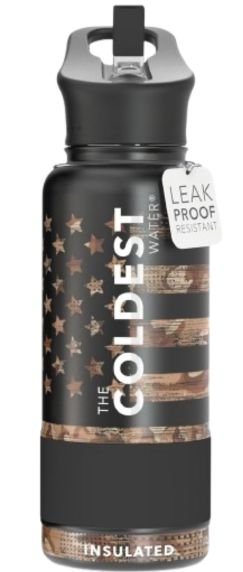 | 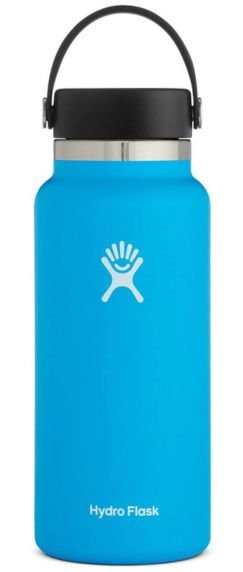 | 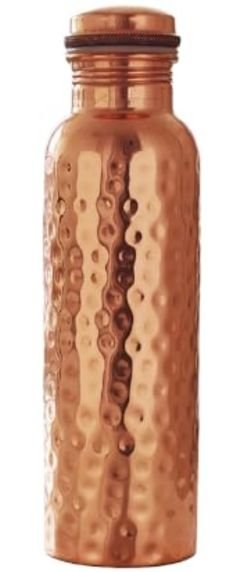 | 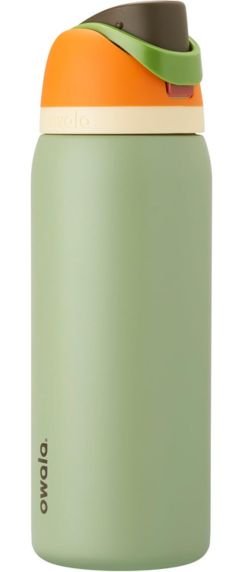 | 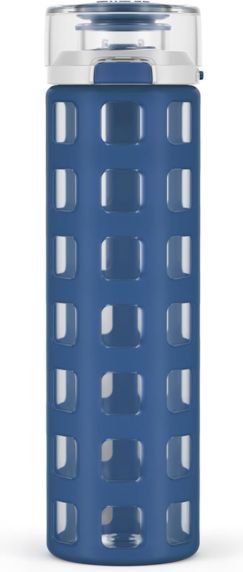 | |
Price | $40 | $45 | $35 | $35 | $20 |
Recommended Size | 32 | 32 | 32 | 32 | 20 |
Bottle material | 18/8 stainless steel | 18/8 stainless steel | Copper | 18/8 stainless steel | Borosilicate glass |
Fits in cup holders? | NO | NO | YES | NO | YES |
Leakproof? | YES | YES | YES | YES | YES |
My score | 4.85/5 | 4.75/5 | 4.4/5 | 4.25/5 | 4.1/5 |
Buy now |
Coldest Bottle
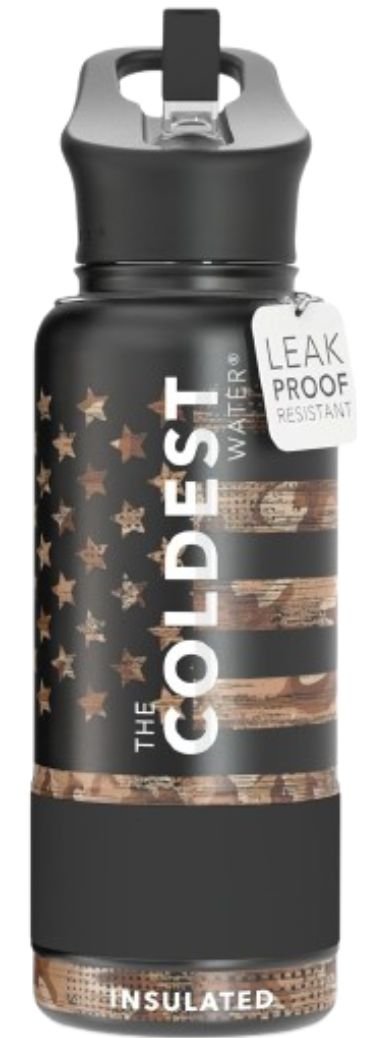
KEY FEATURES
PROS
CONS
Coldest bottle is one of the most unique bottles you can buy. But more importantly, I trust it completely.
It’s built from 18/8 stainless steel, the kind that’s food-grade, non-reactive, and basically immune to rust or weird tastes. There’s no hidden liner, no sketchy coating inside, just solid steel that doesn’t mess with your water. It’s naturally BPA-free, and while the lid is plastic (like every bottle lid out there), Coldest makes sure that part is BPA-free too.
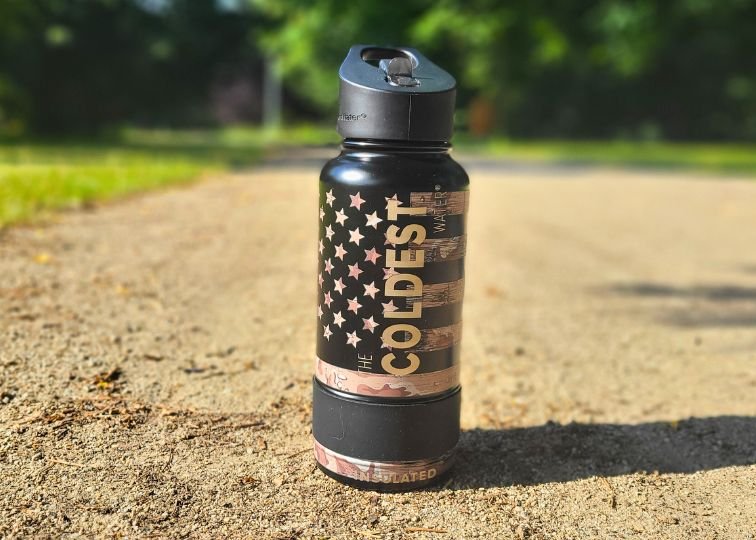
What really sold me is their straw lid. I prefer drinking through a straw, but most straw lids aren’t exactly the cleanest option. This one fixes that. You flip it open using a clear plastic tab, which means your fingers never touch the part that touches your mouth.
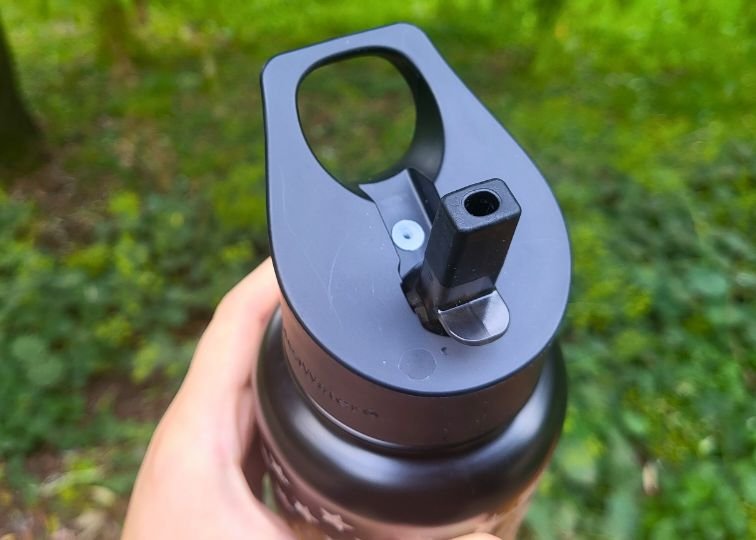
There’s also a safety angle you don’t usually hear about: insulation. Coldest is easily the best-insulated bottle I own, and I’ve tested a lot of them. A cold drink doesn’t just taste better – it stays safer longer. Lukewarm water sitting in a plastic bottle all day is practically an open invitation to bacteria. With Coldest, water stays under 59°F (15°C) for 28 hours, without a single cube of ice. Add some ice and you’re looking at 66 hours of icy cold water. I’ve had it last that long, and it still felt fresh.
But it’s not just safe to use. The bottle is sturdy, doesn’t leak, and is easy to clean. You can use it with one hand while driving, toss it in your bag without thinking, and forget it in a hot car without worrying about drinking warm plastic soup later.
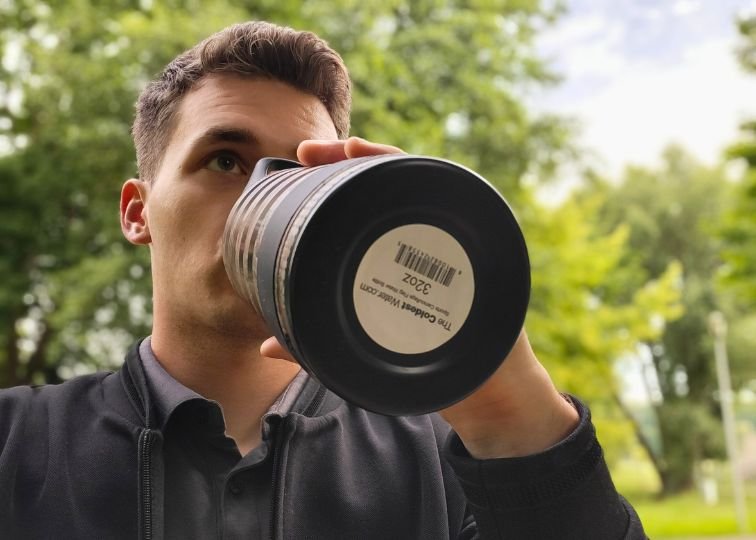
On top of all that, Coldest offers a wild range of colors and designs, so the bottle actually feels like something personal, not just functional. I’ve got the 32 oz version with a straw lid, which I think hits the perfect balance for everyday use.
There’s also something kind of fun going on around the brand itself. They have an app where you can collect points for rewards and discounts, and even run a community where people swap tips and ideas. I joined out of curiosity and stayed because it actually felt like a group of people who care about the product and how they use it.
The verdict? I believe it’s the best water bottle you can buy currently, based on my experience and testing.
Hydro Flask
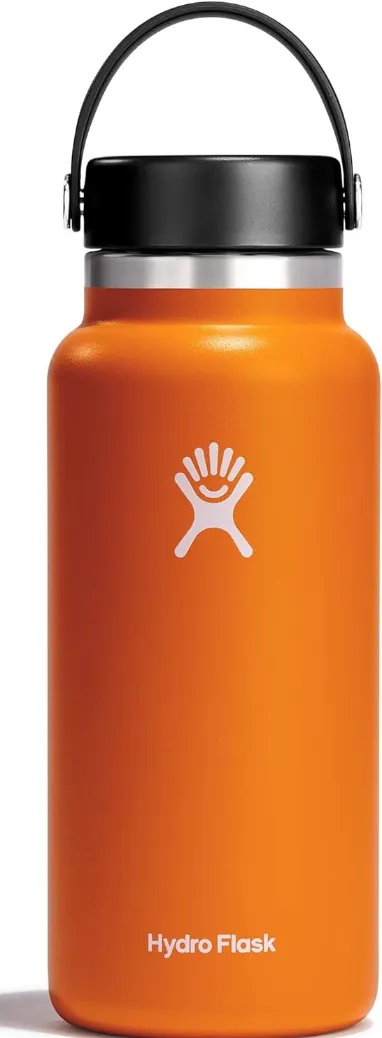
KEY FEATURES
PROS
CONS
I’ve experimented with high-tech hydrogen water bottles and smart bottles, always on the lookout for health benefits, but Hydro Flask proves that you don’t need flashy tech to deliver top-notch safety.
These bottles are proudly BPA-free and lead-free, because the company has steered clear of using lead for sealing their products for years.
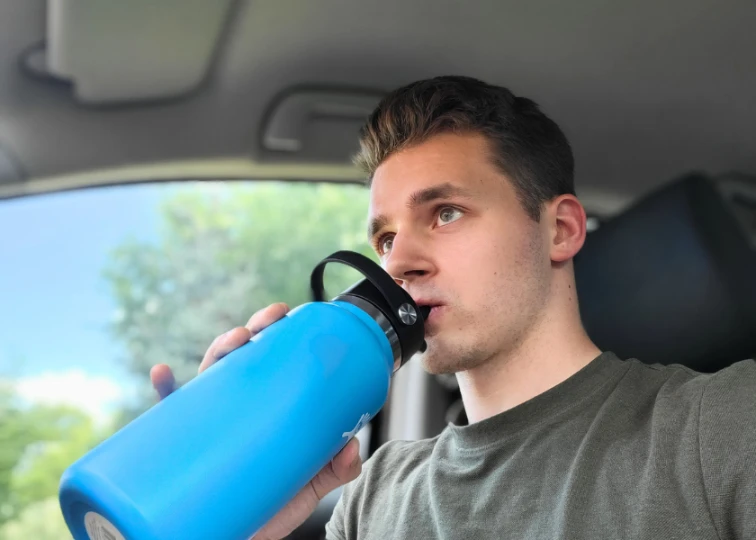
Each Hydro Flask is crafted from 18/8 stainless steel, which is essentially medical-grade.
This material is not only free of toxins and resistant to chemical leaching, but it also handles temperature changes without breaking down.
It meets stringent FDA food contact standards, so you really can’t ask for a safer starting point.
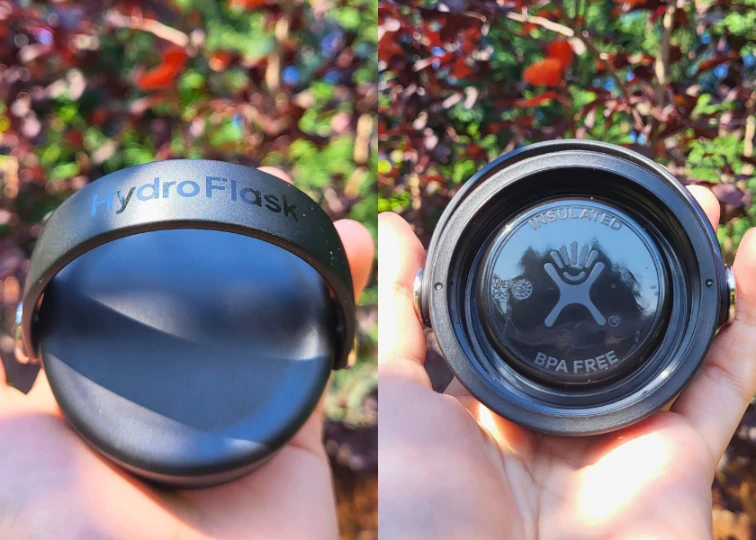
But safety isn’t all Hydro Flask has going for it. I put these bottles through rigorous insulation and durability tests, and they passed with flying colors. It’s one of the most reliable bottles in my collection.
If Hydro Flask sounds like the perfect fit for you, I recommend going for the 32 oz. size because it’s incredibly versatile.
For those always on the move, the new upgraded Flex Straw Cap is hands-down the best option Hydro Flask offers.
And if you’d rather not have any plastic in contact with your water at all, check out this special stainless steel cap here.
Artisan’s Anvil Copper Bottle

KEY FEATURES
PROS
CONS
Stainless steel bottles dominate the market to the point where they all start to look the same. To break from that routine, I decided to try something different: a bottle made entirely of copper. Yes, copper – 100% pure, with the exception of a small silicone gasket.
The one I own is from Artisan’s Anvil, and what struck me immediately was the absence of plastic. In today’s reusable bottle industry, that’s a rare quality. For anyone aiming to reduce plastic in their daily life, this detail alone makes copper bottles stand out.
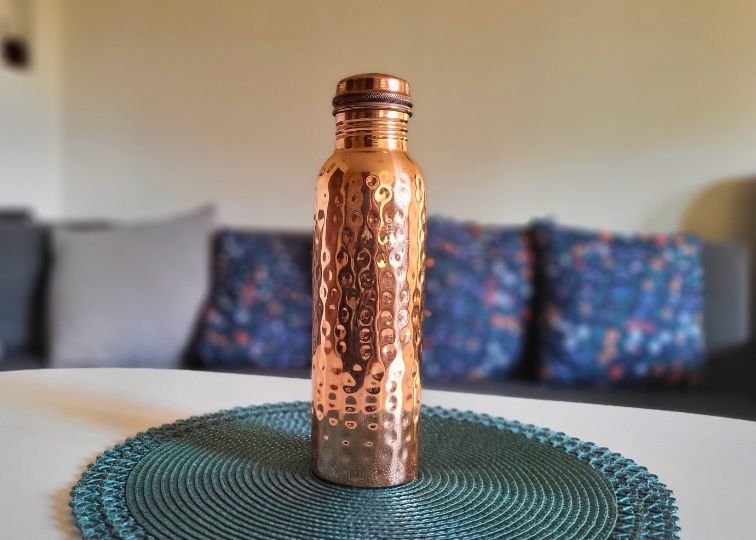
Of course, the real intrigue lies in copper’s natural properties. Copper has been shown to kill harmful bacteria, including strains like E. coli and Vibrio cholerae. This is not just laboratory theory. Copper water vessels have been used in places like India for centuries, where water quality can be unreliable. The tradition has scientific backing: storing water in copper for several hours can indeed reduce microbial contamination.
There’s also the matter of trace copper intake. Drinking from a copper vessel slightly increases the amount of copper in your diet. While most people already meet their needs through food, it remains a curious and potentially beneficial feature of copper bottles.
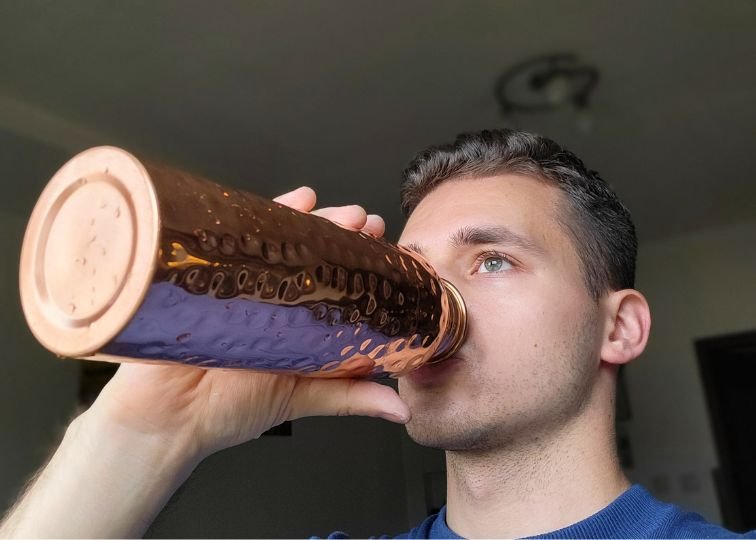
Naturally, copper comes with compromises. It scratches with ease, sometimes even from a fingernail. It dents if dropped. And unlike insulated stainless steel bottles, it offers no thermal protection. Cold water warms quickly, and hot water cools just as fast. Still, what it lacks in durability and insulation it makes up for in character. The warm, exotic look of polished copper is striking, and the health-related benefits are difficult to ignore.
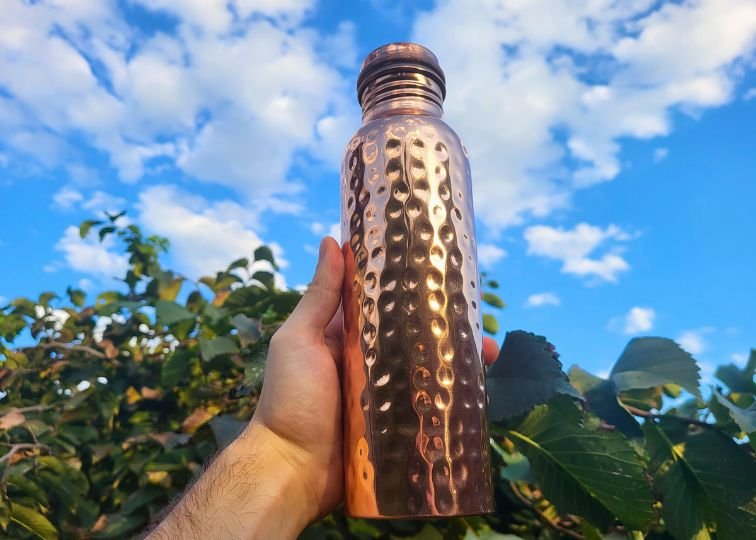
At $35, my bottle felt reasonably priced for something so unusual. I’ve been using mine for a while now and it’s the rare kind of bottle that makes me enjoy drinking water. For more details, see my best copper water bottle guide.
Owala FreeSip

KEY FEATURES
PROS
CONS
If you’re after a stainless steel bottle with decent insulation (and a fun design to boot) the Owala FreeSip might just be your new favorite.
Safety-wise, Owala is a reputable brand that takes pride in educating customers about what goes into their bottles.
While other companies have faced issues (remember when Stanley got called out for lead in their bottles?), Owala pledged that their products are and always will be lead-free. Plus, they’re crystal clear that no BPA is ever used.
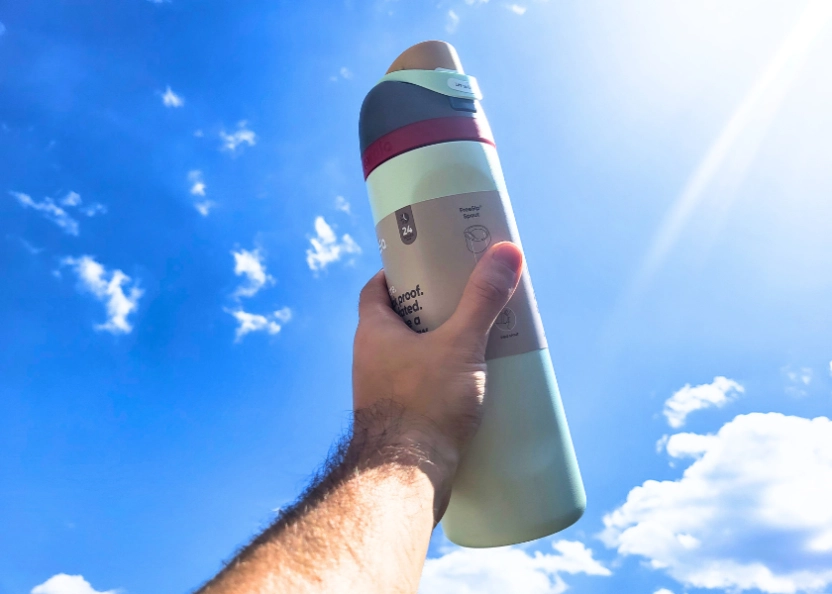
Design-wise, the Owala FreeSip is a blast. It’s hands down the most fun bottle in my collection, thanks to the huge variety of colors, patterns, and designs available.
The unique lid makes sipping super easy and keeps the straw hidden for extra cleanliness, which is an extremely rare feature. Whether you prefer a chug or a straw, there’s a setting for you.
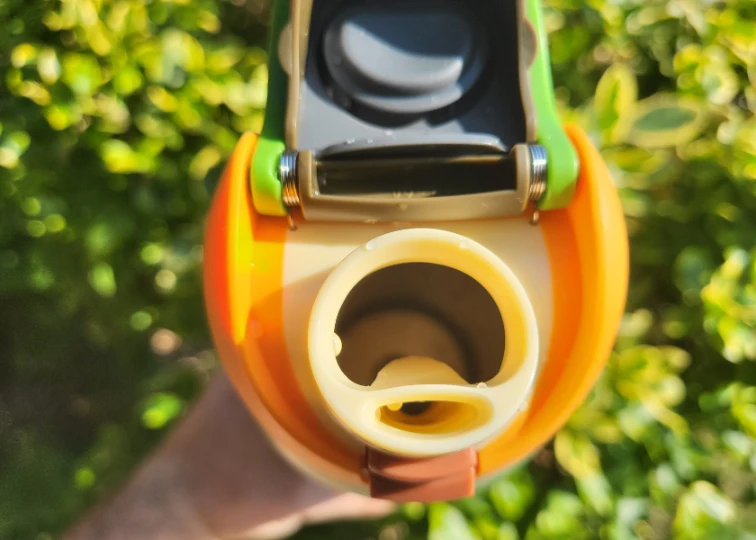
On top of that, it’s generally a bit more affordable than options like Hydro Flask or YETI, yet it’s still built with premium 18/8 stainless steel.
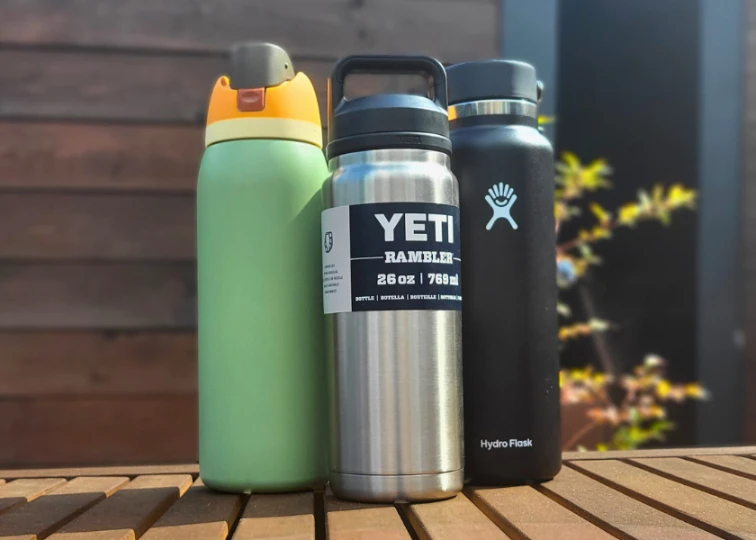
Of course, there are a couple of quirks to keep in mind. Unlike the Hydro Flask, the Owala FreeSip is designed exclusively for cold beverages, so if you’re planning on enjoying a hot drink, this one’s not for you.
Also, it’s not entirely dishwasher safe, so you’ll have to give it a good hand wash.
All in all, the Owala FreeSip has quickly become one of my most-used bottles, and I trust it completely when it comes to safety and performance.
If you’re into its playful, unconventional design (or if you’re looking for a cool gift), I recommend giving it a try!
Ello Syndicate Glass Bottle

KEY FEATURES
PROS
CONS
Glass has always been the gold standard for taste purity. Water from glass simply feels cleaner, untouched. But the material carries its curse: fragility. That’s the reason you won’t see brands like Hydro Flask, Owala, or YETI venturing into glass territory. The risk of shattered bottles and endless returns probably outweighs the reward.
Still, a few brands are brave enough to try and some of them succeed. One of the brighter examples is the Ello Syndicate.
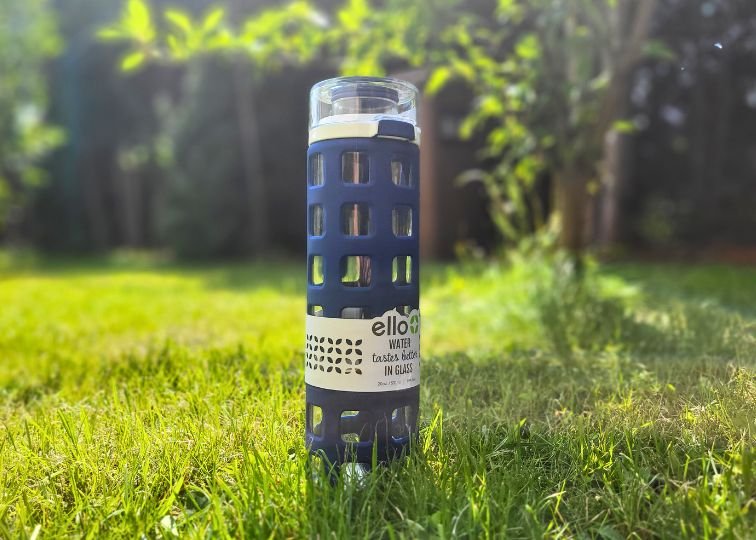
While many glass bottles push the $40 mark, Ello manages to offer theirs at around $20 for a 20-ounce size. Admittedly, 20 ounces isn’t generous; you’ll be refilling several times a day. But glass earns a pass here – the point isn’t capacity, it’s purity.
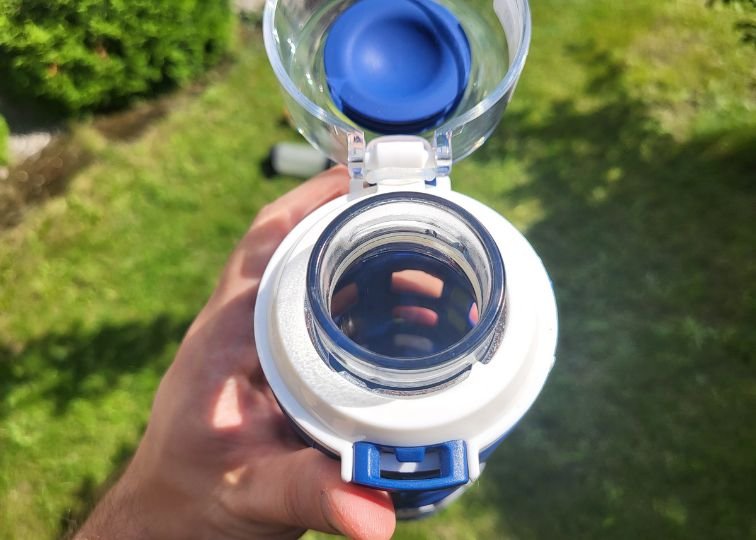
Ello wraps the bottle in a thick silicone sleeve, and it does its job well. Drops and knocks are far less terrifying, though the added protection comes at a cost: weight. This bottle feels solid in your hand, noticeably heavier than stainless steel of the same size. Personally, I’ll take that tradeoff – better heavy than shattered.
The glass itself is borosilicate, the most durable type available. In theory that inspires confidence, in practice, glass remains glass. I’ve broken two borosilicate bottles this year alone, though thankfully not this one.
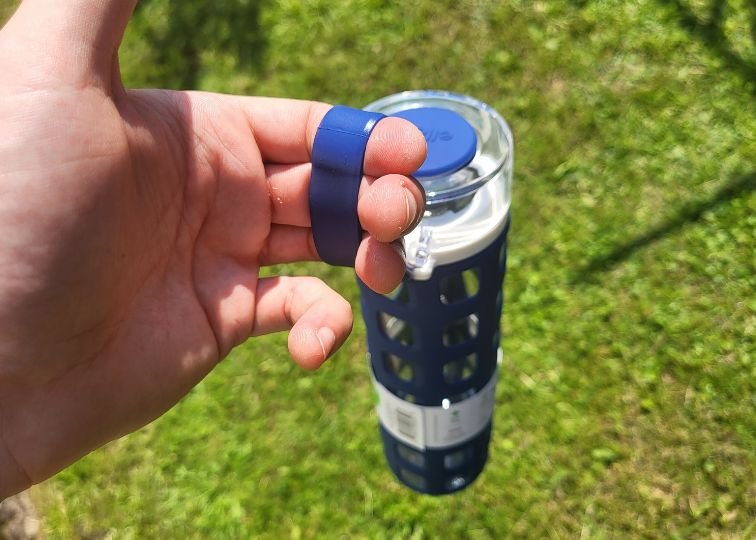
The lid, made of BPA-free plastic, is the lone compromise. It doesn’t match the all-glass ideal, but it’s functional and comes with a clever side lock that prevents accidental opening.
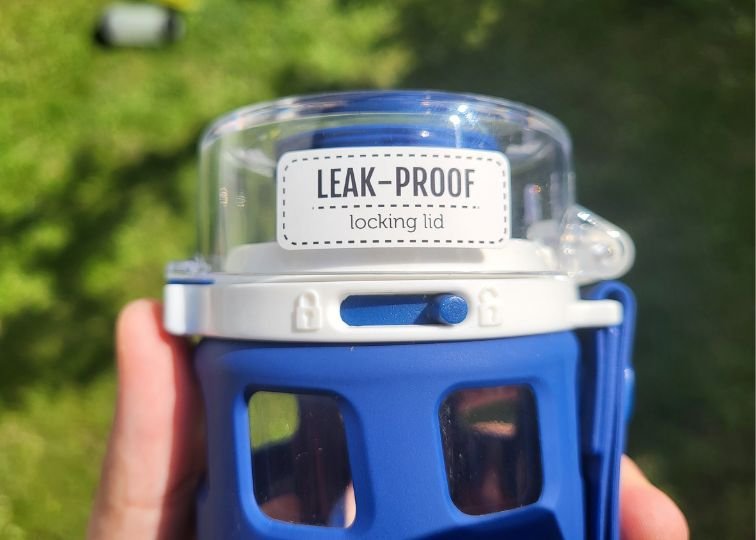
Overall, the Ello Syndicate doesn’t pretend to be more than it is. It won’t wow you with insulation, capacity, or features. What it offers is simple: a reliable glass bottle that delivers water at its purest, while doing its best to survive the bumps of everyday life. For me, that’s enough.
Is it Better to Drink from Glass or Stainless steel?
Both glass and stainless steel are great and safe choices, but they have pros and cons.
- Glass is the purest option. No metal taste, and easy to clean. But it’s fragile and can be a bit heavy, especialy those bottles with thick protective silicone sleeves.
- Stainless steel is more durable, keeps drinks hot or cold longer, and is great for travel. They can be heavy, but there are dozens of options with reasonable weight you can find.
If you want purity and don’t mind fragility, go for glass. If you need something tough and insulated, stainless steel is better.
Keep in mind that these are not the only materials available, and my complete guide to best water bottle materials explores the rest in detail.
Is It Safe to Drink out of Stainless Steel Every day?
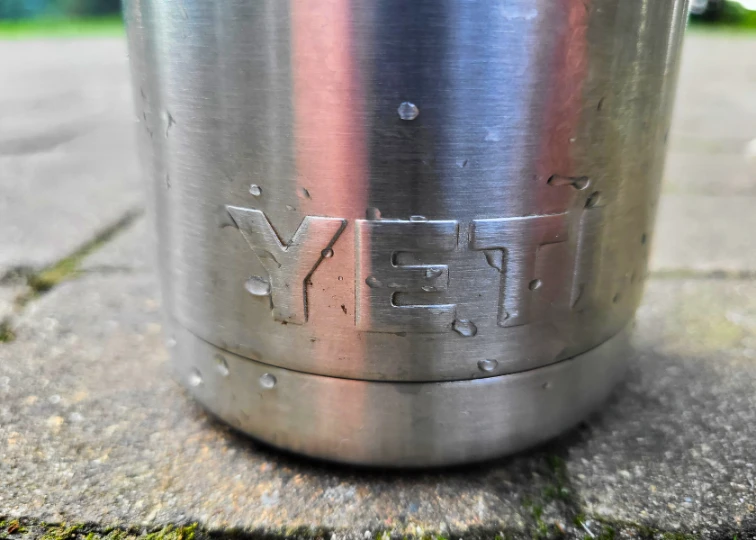
Yes, it’s completely safe to drink from stainless steel every day, but make sure it’s high-quality, food-grade stainless steel (like 18/8 or 304). It won’t leach chemicals, it’s durable, and it keeps drinks hot or cold.
That said, ANY bottle that isn’t cleaned regularly can become unsafe due to bacteria buildup. Wash it often to keep it safe to use.
Final Thoughts
This isn’t an exhaustive list of safe water bottles and there are plenty of other great choices out there.
Fortunately, we live in a time when it’s becoming less common to find a reusable bottle, even a plastic one, that contains harmful chemicals (although some unsafe options still exist).
That said, every bottle on this list has been personally tested over the years, so I can vouch for their safety. After all, I’m still alive and healthier than ever!
But remember, safety is just one piece of the puzzle. Durability, insulation, and overall usability matter just as much. The best choice is a versatile bottle that balances these qualities, with safety as an added layer of assurance.
For me, the Coldest bottle takes the top spot because I use it every day. But depending on your needs, you might find another option that suits you even better!

Jeremiah Kowalski
Hey there! I’m Jeremiah, the guy behind WaterBottleAdvisor.com. I used to have a bad habit of guzzling sodas while working remotely, but thanks to reusable water bottles, I’ve turned my hydration game around. After testing over 50 bottles, I’m here to help you find the perfect one to make staying hydrated a joy, not a chore. When I’m not reviewing bottles, you’ll likely find me scaling steep trails around the world, trusty water bottle in hand.
